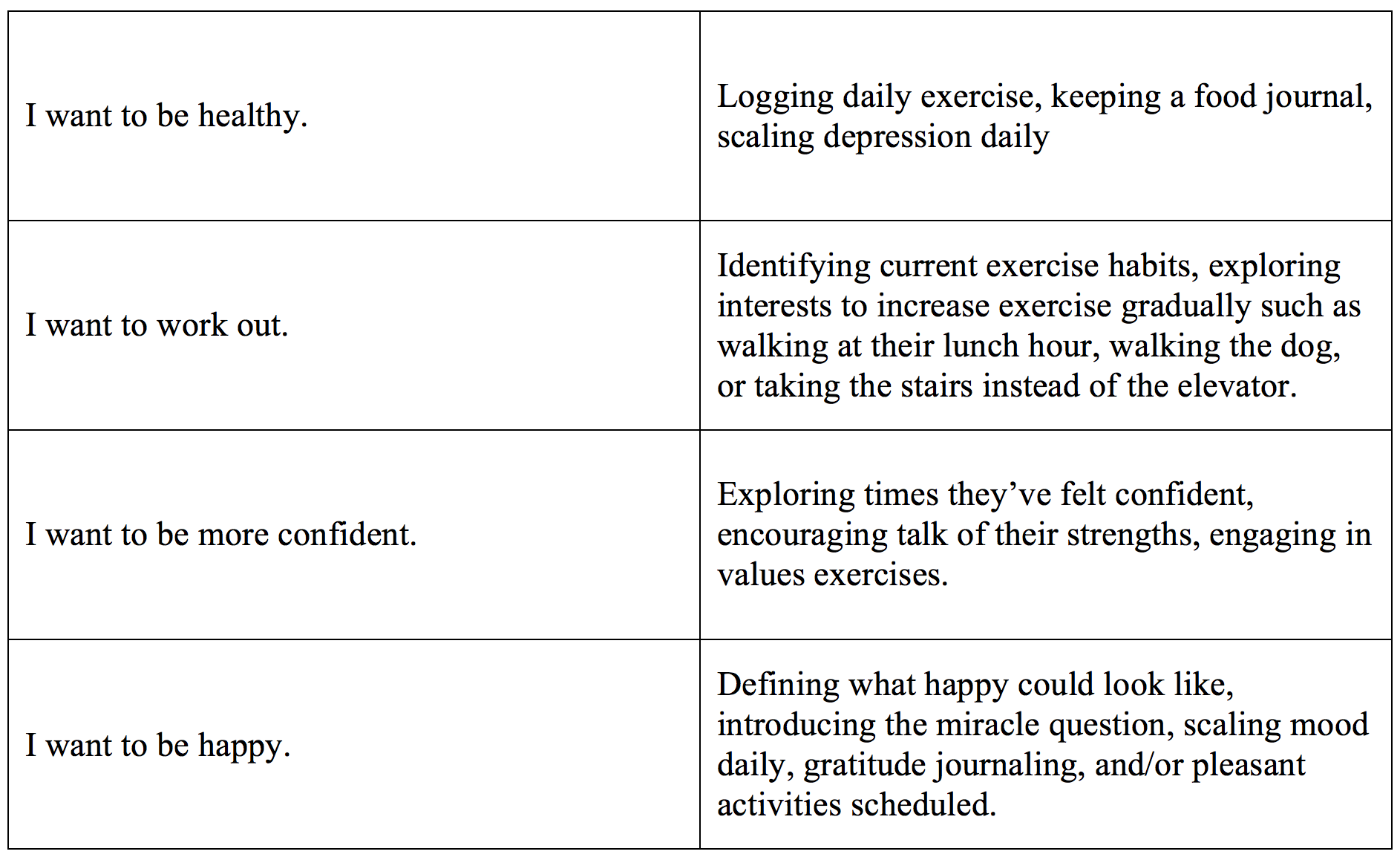As December comes to a close, your clients could be looking to the new year to create resolution or revisit their treatment goals in the hope of change. It’s a time to explore goals that are measurable and attainable; it’s a time to create small steps to build self-confidence so they remain motivated and hopeful. Perhaps your client comes into your office saying “I want to join a gym to help my depression.” You meet their disclosure with compassion and curiosity and ask them to share more. You learn they want to work out every day to help their mood but aren’t currently working out on a consistent basis, and not ever at a gym. So you find it important to explore with them their motivation as well as the perceived strengths and challenges of reaching their goal. Your client learns that smaller steps can support success and agrees to working on short-term goals to build confidence and to move towards their long-term goal of working out daily.
Monitoring Motivation
Why is it important to explore motivation around a goal? Research tells us goals around fitness and gym attendance peak in January and dramatically decline by February and March every year. Additional research tells us that we must do something consistently for a minimum of 30 days for it to become a habit. What this conveys to us as human beings is that we need to see results or progress to continue to work hard at a goal. You may normalize this for your client. You may also provide psychoeducation on the Stages of Change from Motivational Interviewing as a visual to support your client in identifying strengths and barriers to change. In meeting your client where they are at, consider the questions below to explore motivation with your client:
- What do you want to change? (Precontemplation to Contemplation)
- What makes that a problem for you? (Contemplation)
- Is it a big enough problem to want something different? (Contemplation)
- How would you achieve the desired change? (Preparation)
- What do you need to support change? (Preparation)
- What would help you to begin? (Action)
- How will you know when you are ready for change? (Action)
- What would help you keep going? (Maintenance)
- Who/What would hold you accountable?
- What would happen if you don’t succeed?
By engaging your client in exploring these questions, they can identify any current strengths or barriers to succeeding and further explore what is needed to progress through the stages of change.
Make it Measurable
It isn’t uncommon for a client to identify a goal but not know how to attain it, thus remaining in the stage of contemplation. It becomes our responsibility as their support to break down a long-term or larger goal into measurable, smaller pieces. Here are some examples of how to make it measurable when a client identifies a larger, more abstract goal in therapy:
Our therapeutic interventions can support short-term goals blending into long-term goals over time. By identifying and writing treatment goals that are measurable and can be reviewed with your client regularly, the effort it takes to achieve these goals can feel validated and attainable for your client.
Supporting Strengths
Validation can be a strong motivator. Helping clients slow down to identify their strengths throughout the process can be motivating in and of itself. It isn’t surprising that clients can find themselves stuck in the past, such as awareness of how they used to be able to achieve goals with no effort and frustration that they cannot find that same success today. Or perhaps they are so future focused they aren’t able to recognize the smaller changes that have taken place. One of the most rewarding elements of therapy can be reviewing goals and progress towards those goals. Your clients may be unable to recognize the small but important shifts in their functioning and therefore it can be impactful to help them remember where they started in this process and how their hard work is supporting healthy change. By identifying their strengths and supporting them throughout the process, clients can experience motivation and recognize goal progression, allowing the ongoing growth and change they seek.
“Change will not come if we wait for some other person or some other time. We are the ones we’ve been waiting for. We are the change that we seek.” Barack Obama.



